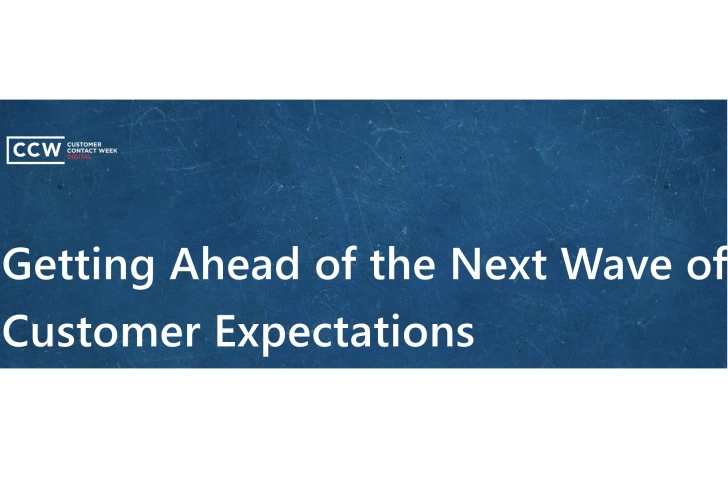What’s A Writers’ Strike, And How Will It Impact Entertainment CX? What Viewers Can Expect From Their Favorite Shows, Films and Series
As studios are struggling to reconcile with the rise of digital in entertainment, writers spread thin by customer demands say production companies aren’t giving them a fair share of streaming revenue,
Add bookmark
What’s A ‘Writers’ Strike,’ And Who Is Involved?
If you haven’t heard about the Writers Guild of America's union strike yet in the news, you may soon feel its impact in theaters, through streaming services and on television stations. Tuesday May 2 marked the first time in 16 years that the East and West coast branches of the organization, which represents 11,500 television and film writers, have failed to negotiate a new contract with Hollywood studios that ensures due compensation and protection for workers.
This contract negotiation that occurs every three years has been met successfully since 2007, the last time the Writer’s Guild of America (WGA) went on strike. That time period lasted 100 days, during which the WGA picketed against the Alliance of Motion Picture and Television Producers (AMPTP) trade association, which represented 397 American film and television producers including:
- CBS
- MGM
- NBCUniversal
- Lionsgate
- Paramount Pictures
- Sony Pictures
- Walt Disney Company
- Warner Bros. Discovery
According to NPR, the 2007-2008 strike cost the economy of Los Angeles an estimated $1.5 billion, while other reports claim more than $2 billion in losses and nearly $772 million in lost wages to show writers and production employees. The late 2000s strike was the second-longest in WGA’s history, trumped only by the 1988 writers’ strike which lasted 153 days. But with the strike of 2023, there are other factors to consider that didn’t even exist 16 years ago in 2007:
- the role of streaming in entertainment and how it competes with or grows industry revenue
- pressure to increase the “bingeability” of shows and have writing that viral Internet moments
- quicker production speeds and tech to compensate for high production costs and volumes
- automation’s impact on workforce and production, such as script writing and storyboarding through tools like generative AI
- emergence of additional movie houses and production companies like Netflix, Hulu, Amazon and Apple
- COVID precautions on set that have over time led to greater use of digital in pre- and post- production
We proposed that AI not be used to undermine our work; they rejected our proposal, and offered an "annual meeting to discuss advances in technology." Wow, a MEETING?!? Thank you ever so much!!
— Adam Conover (@adamconover) May 2, 2023
An insulting counter, just dripping with contempt.
The WGA’s most recent contract with the AMPTP ended without agreement at midnight PST on May 1, prompting 97.85 of union members to vote in favor of a strike. This particular writers’ strike focuses on the discrepancies production workers say they face when it comes to streaming revenue versus the checks they are cut.
Streaming Success And Viewer Demands Have Left Entertainers With Little Wiggle Room
As series streaming budgets have grown over the years, says the WGA, writing staff size, episode turnaround time–and as a result–pay have shrunk, leaving some employees to find multiple income sources over the span of a single send-to-streaming season. “There’s too much work, and not enough pay,” one union member tells the Associated Press. There are reports of production companies turning to non-union members–freelancers–in order to finish scripts quickly and pay non-union writers less. “The companies' behavior has created a gig economy inside a union workforce,” the WGA said in a statement. To adjust for the imbalance, the guild’s proposal chart shows the union is looking to bring in $429 million to writers, and ensure that anywhere from 6-12 writers are in a room per production. Currently, Hollywood is facing not just residual impacts of COVID-19, but also the effects of a tumultuous job market, streaming wars and inflation. The AMPTP’s counter-proposal to the WGA offers writers $86 million, stating that all things considered studios are thinking about the long-term health of the entertainment industry. According to the AMPTP, its offer to the WGA "included generous increases in compensation for writers as well as improvements in streaming residuals,” despite the fact that studios’ top concern involves the guild's request for an increase in writers.
As it stands, during the strike no member of the WGA will write new scripts for TV shows or movies–or get paid–until union members vote to end the strike. However, members of the WGA who work in broadcast TV, radio, streaming news, online media, nonfiction podcasts, nonfiction TV, or public TV will stay on the job, reports Vox. In terms of who won’t be working during the strike, there’s a clear “trickle down” effect: with no shows, makeup artists, set dressers, carpenters, electricians, stage hands, caterers, actors and directors will all be unable to work as well.
During the period that unions under AWG East and West will be picketing, other entertainment unions that represent the aforementioned departments are left to determine their own ability to ignore or respect picket lines. Some workers and union members will be willing to cross picket lines and continue to work, but others are not. The president of the International Alliance of Theatrical Stage Employees, Moving Picture Technicians, Artists and Allied Crafts of the United States, Its Territories and Canada (IATSE), this week determined that members working on productions impacted by the strike have the legal right to honor the guild’s picket line. In 2021, they too were up against the clock with the AMPTP, but narrowly avoided a strike through a contract agreement. At the time of publication, a representative of IATSE had not responded to CCW Digital’s request for comment.
While the ramifications of strike are most immediately felt within the entertainment industry, its secondary site of impact is also a primary catalyst for picketing: viewers.
The Entertainment Customer Experience Comes At A Cost, And Consumers Have Been Cashing In
From 2007-2023, streaming went from a novel idea to the standard for television and movie viewing. More people are watching from home and waiting for films to exit the theater. Less people are making excuses for production companies when they take too long to release the next installment of their favorite series. If they’re dissatisfied with one channel or platform, customers can subscribe and tune in to countless others that offer them more shows and special features than they can watch in a singular lifetime.
Show streamers, movie watchers and television buffs have grown accustomed to carefully curated programming, cost-effective pricing, stream anywhere capabilities, binge watching, and even peer pressuring brands to release content earlier than expected. When these things don’t happen, production houses are targeted and put on display as examples of bad customer service, and an even worse customer experience. The AMPTP and the WGA are both under immense pressure to deliver, seemingly regardless of circumstances either organization may face. As a result they’ve turned to alternative means in order to attempt to fulfill both their own needs and those of customers, much like the contact center industry is also facing economic pressure, tech acceleration, overwork and consumer demand at unprecedented levels.
Although the role of the customer in the entertainment sector seems harsh, it speaks to the disconnect that often exists between the art and the artist, so to speak. While many viewers are enjoying their favorite creature comforts from home, there are hundreds of people scrambling in the background to make them happen at lightning speeds. Like the unseen phone agents behind the reciever, oftentimes these people who help provide us with Oscar-worthy moments are not the same ones working in plain sight or sitting in the boardroom creating production schedules and marketing strategies. And sometimes, despite their best (or worst) efforts, even top movie executives don’t have their fingers on the pulse of what consumers are looking for when it comes to quality programming. Due to this, major labels are consistently making headlines for two polarizing reasons: their customer service is awful, or it’s amazing.
With Shows On Strike, Customer Service Becomes A Waiting Game
There are many different ways to consume media these days, and each one will face its roadblocks as the writers’ strike continues. For customers and subscribers, that means buckling up for a potentially long, bumpy, and confusing road.
Consumers won’t immediately see the impact on the writers’ strike when it comes to film releases (most movie scripts with scheduled releases have already been written), but film quality may suffer as re-writes will be out of the question as long as picket lines are up. In the span of a single day cable television has already seen a shift in its programming schedule. The evening that the writers’ strike was announced, The Tonight Show starring Jimmy Fallon, The Daily Show with Trevor Noah, Jimmy Kimmel Live, The Late Show with Stephen Colbert and Late Night with Seth Meyers all went dark with no WGA writers available to produce the night’s content. Shows like Saturday Night Live will resort to re-runs, and some TV channels are already turning to international programming that will not rely on guild members as part of its workforce.
In terms of scripted dramas and comedies, it will actually be quite a while before a normal viewer would see a difference," Hollywood Reporter writer Alex Weprin tells CBS News. "There are a lot of episodes that have already been shot that are banked for later use; there are also some scripts that have already been written for some of these shows." Studios have also had ample time to prepare for a looming strike. Many production houses moved to finish projects and stockpile content in the short term. Studios like Warner Bros. Discovery rushed to finish projects and create a backlog to have enough content for the short term, and others like Netflix may also turn to international programming to meet U.S. customer needs.
Fan favorites like Abbott Elementary are already feeling the loss, says Brittani Nichols, who notes that their writer’s room has been shut down in the middle of the third season.
“We are a show that writes while we air,” she explains. “If the strike goes on for a significant period of time, our show will not come out on time and that could change the amount of episodes which I’m sure people will be very upset about.”
The show’s creator and lead actress Quinta Brunson also spoke out about the issue Monday night at the Met Gala, saying “I’m a member of WGA and support WGA, and them getting—we, us—getting what we need… No one wants a strike, but I hope that we’re able to rectify this.”
For customers confused or upset about how their customer experience may plummet in the next few weeks to months, the pressure they've put on the entertainment industry does have somewhat of a silver lining, if one can even call it that: they wanted more shows, they got more shows. This hiatus comes as an opportunity not just to explore hundreds of other shows, films, and streaming platforms, but also for consumers to understand their place in the entertainment ecosystem. All organizations and brands with a customer service compenent will, by nature, want to provide consumers with personalized experiences that keep them coming back for more. The fact that a strike is on at all proves that to be true. Production companies want to give more, but in order for them to give more they too must give more to their teams.
The nature of CX means that there are always two sides to any "experience": the consumer's and the employee's. If one operates goes poorly so does the other; with movies and television it is no different. So while the Hollywood sign might be dimmed for some time, we can all hope (and wait) for a bright light light at the end of the contract negotating tunnel.
Photo by De'Andre Bush on Unsplash: https://unsplash.com/photos/ErMkvcFla74























